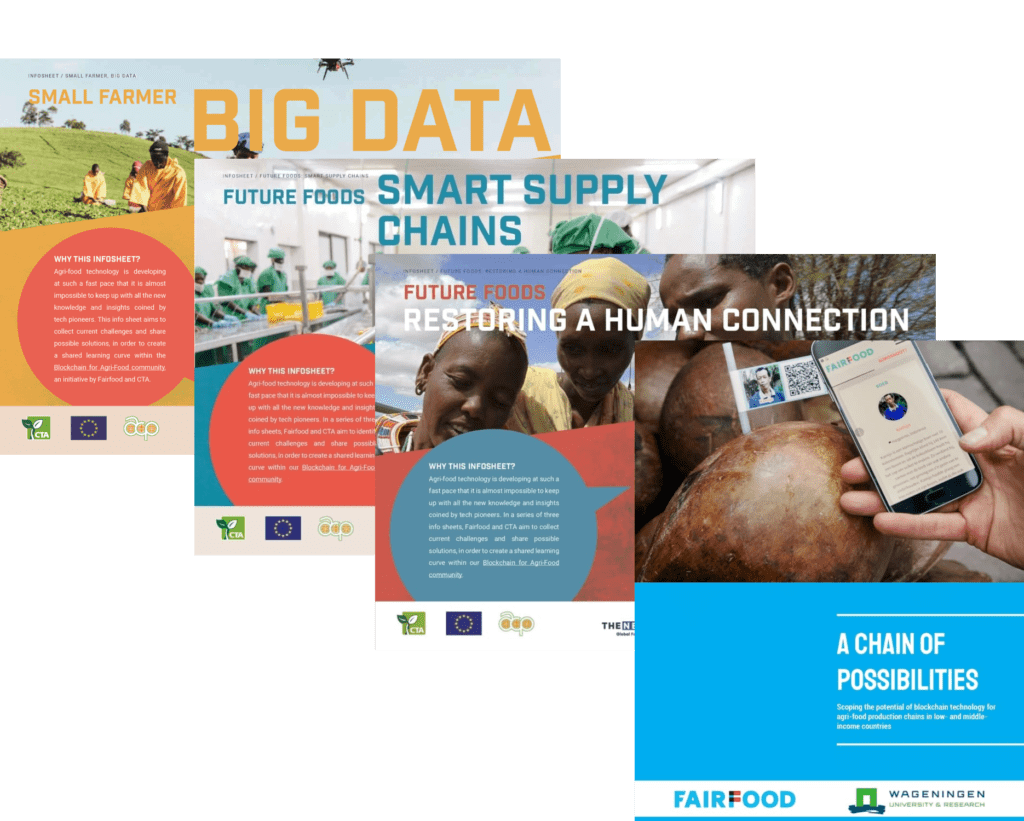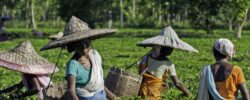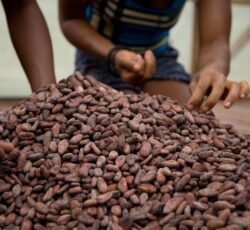How Blockchain can help smallholder farmers: get access to insurances
At Fairfood, we identified nine ways in which blockchain can help smallholder farmers. In a new blog series we will dive into these nine topics, looking at interesting use cases, reports and visionairs. In the fourth post, guest blogger Annette Houtekamer (IBISA) explores how blockchain can help smallholder farmers get access to insurances.
Agriculture is the main source of income for large portions of the world’s population, but it is a volatile business. Crops are lost due to a variety of circumstances of which weather-related events take the lead. Climate change will not make things any better in the mid-to-long term. Of course, there are additional issues such as poor infrastructure, lack of access to distribution networks, over-regulation, etcetera.
Smallholder farmers can experience great financial disruption when unexpected events occur. A farmers’ property may be limited to a few crops, but the loss of them may be a great blow to the family’s economic situation. For a smallholder farmer, even small sums insured can ensure protection and dignity on the long run. The problem is that insuring small sums means small premiums and low profits for the other party involved: the insurers. This makes smallholder farmers less interesting as potential clients, often causing them to not get access to insurances at all – the business is not viable in the traditional way.
In the 100 poorest countries worldwide, a staggering 99.3 percent of people with a low income working in agriculture are without any form of insurance.
In the 100 poorest countries worldwide, a staggering 99.3 percent of people with a low income working in agriculture are without any form of insurance, the study Insurance provision in the world’s 100 poorest countries found. The study also found that insurers tend to specialise in health and life, and ignore agriculture as a whole. Hardly surprising if you realise that for farming, underwriting and claims validation are more difficult. With smalls sums assured and small premiums received, the cost of the necessary controls – including loss adjustment – often renders this insurance business nonviable, with the traditional means and scale penetration.
Radical change through Blockchain
An answer seems near. Blockchain, which is a form of mutualised record-keeping in a near irrevocable time-stamped ledger, has some truly profound implications for the world as is. So much so that it is being likened to a foundational technology, much as the internet was in the early 1990s. To IBISA, a trust and efficiency engine like the blockchain technology has the potential to drive radical change in the insurance industry while improving transparency and outcomes across the entire agri-food value chain.
Usually harvest losses as a result of drought or excess rains are assessed by on the ground experts. The outcome is used to indemnify the farmers. This usually takes a long time and costs a lot of money. Alternatively, weather stations that measure the amount of rainfall are used to decide whether a pre-defined amount of rain has fallen. This leads to deviations of the reality for those farmers who live more than a couple of kilometres away from that weather station. So, a clear need for low cost loss assessment is needed. The combination of Earth Observation and blockchain brings that solution. As a result, smallholder farmers will have access to insurance finally. Insurance leads to reduction of losses, which in turn leads to income enhancement. More income can potentially be invested in better quality seeds and better farm management. Ultimately, this positive spiral could stimulate youth to stay on the farms and women who typically have the smallest farms to thrive as well.
An important side note to us: intermediaries do not have to be written out of the equation — or disintermediated — as many blockchain enthusiasts argue. Rather, they may be adopters of the technology. Admittedly, this shift will be hardest on the established insurance companies in the industry, for it will require uncomfortable transparency and price corrections in their business models.
Satellite data is being used to scale up damage assessment without using ‘ground truth.
The next generation of insurance
IBISA caters to the next generation of insurance. It is a mutual risk-sharing service designed to solve the uninsurability of smallholder farmers and pastoralists in the world. IBISA is a platform built on a decentralised mutuality-based system that enables the sharing of farmer-to-farmer risks in a transparent and cost-efficient way, harnessing the use of blockchain, satellite earth observation data and index-based risk modelling. The simple act of getting together, joining hands, sharing resources, risks and needs, unleashes the potential of ‘mutuality’. In this way, smallholder farmers all over the world can be granted access to a risk sharing mechanism that protects them from falling back into poverty after a climate related disaster such as drought or excessive rain.
IBISA is a B2B platform on which local partners globally on-board farmers in the mutual community to share their weather-related risks. IBISA uses blockchain as a trust machine and as a means to lower admin and operational costs. Besides, satellite data is being used to scale up damage assessment without using ‘ground truth’. The platform automates monthly assessment and pay-outs, removing the need of filling claims and providing timely compensation. IBISA is scaling in India and is being piloted in Niger.
For the first time, blockchain and Satellite Earth Observation (EO) technologies enable profitable agriculture crop insurance products. They hold the potential to drastically reduce costs that are typically incurred by traditional insurer-centric paradigms. IBISA re-engineers the business process and business model to drastically reduce costs and enhance resiliency and transparency. We use blockchain to automate maximum of back-office, to mutualise risk in a decentralised way and to enhance transparency. Besides, blockchain is being used to spread operating costs between stakeholders instead of concentrating them, and to put in place transparent governance for stakeholder management.
Contributing to the SDG’s
New ways of insuring will improve food security by stabilising a household’s income after shocks. Moreover, timely and automated payments will in some cases enable farmers to invest in a second sowing, still leading to a successful harvest. In this way local food production is stimulated. This immediate payment improves lending opportunities and encourages follow-on investments in agriculture. IBISA provides a safety net and breaks the vicious cycle that keeps farming families in perpetual poverty. Because the fees of insurances are low and the assessment is fast, the farmers will have money in their pocket to recover from setbacks, re-invest in their crops and feed their family.
Climate change brings about major risks for farmers exposed to drought or excessive rainfall. It is important that investments are made, also by smallholder farmers, to cope with the effects, such as a shift to drought resistant crops and fruit trees, drip irrigation, etcetera. However, these investments need to be protected. If not, farming communities will be forced to abandon lands that are more sensitive to climate change, and an abandoned farm is one that succumbs quickly to desertification or erosion. IBISA mitigates the financial effects of extreme weather events, and strengthens resilience, therefore allowing farmers to stay in their ancestral lands. This is a key frontline in the fight against climate change.
Find out more
—
This article is made possible with the financial assistance of CTA (Technical Centre for Agricultural and Rural Co-operation). The views expressed above can in no way be taken to reflect the official opinion of CTA.



